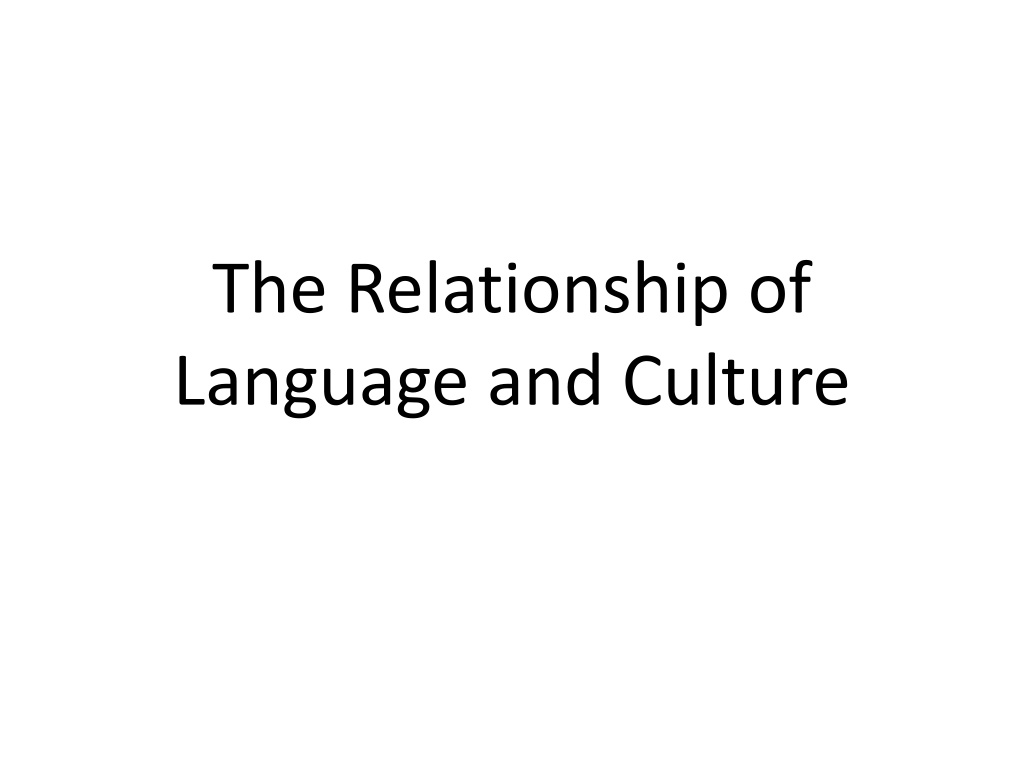The Intricate Relationship Between Language and Culture
Language serves as a vital tool for social interaction, intricately woven into the fabric of culture. It expresses, embodies, and symbolizes cultural realities. In the interplay of nature and culture, language immortalizes and transforms elements like roses, embodying essential aspects of society. The speech community and socialization play key roles in shaping behavior and communication norms, reflecting invisible cultural rituals. Communities of language users view culture through social, historical, and metaphorical lenses, emphasizing shared linguistic codes and discourse communities. The diachronic view explores how everyday practices draw from shared history and tradition, enriching the sociocultural context of language study.
Download Presentation

Please find below an Image/Link to download the presentation.
The content on the website is provided AS IS for your information and personal use only. It may not be sold, licensed, or shared on other websites without obtaining consent from the author. Download presentation by click this link. If you encounter any issues during the download, it is possible that the publisher has removed the file from their server.
E N D
Presentation Transcript
The Relationship of Language and Culture
Language It is the principal means by which we conduct our social lives It becomes connected to culture when used in contexts of communication Language expresses cultural reality Language embodies cultural reality Language symbolizes cultural reality (a system of sign)
Nature, culture, language Culture: refers to what has been grown and groomed. Nature vs. Nurture (clip 1) Nature & culture both need each other e.g. The general rose in poem Relationship: Nature : rose Culture : forces transforming nature ( screws / common assumptions & expectations) Language: immortalizing nature (rose/lady/poet) by word
Emily Dickinson Essential Oils - are wrung The Attar from the Rose Be not expressed by Suns - alone It is the gift of Screws - The General Rose - decay But this - in Lady's Drawer Make Summer - When the Lady lie In Ceaseless Rosemary -
Speech community - Particular meanings adopted by the speech community and imposed on its members - example roses (clip 2) Socialization - Social dos and don t s that shape ppl behaviour in both speaking & writing - Invisible ritual imposed by culture on lang. users (to bring order & predictability)
Communities of Language users 3 ways of viewing culture (social/ historical/ metaphorical) 1/ Social: Speech community; Composed of ppl who use the same linguistic code Discourse community: The common ways in which members of a social group use language to meet their social needs (keyword: common purpose) (clip 10) Discourse accent: e.g. topics/ style of speech/ way of interaction
2/ Historical - the culture of everyday practices draws on the culture of shared history and tradition. - diachronic view - e.g. Eiffel tower/ Mona Lisa Sociocultural context of language study (social + historical views of culture)
Imagined Communities 3 . The metaphorical way of viewing culture: Discourse communities: - (facts + dreams + imaginings) - imaginings are mediated through language e.g. 1- London culture (Shakespeare) 2- I have a dream (clip 3)
Insiders / Outsiders Orientalism Hegemonic e.g. Edward Said (clip 4)


























